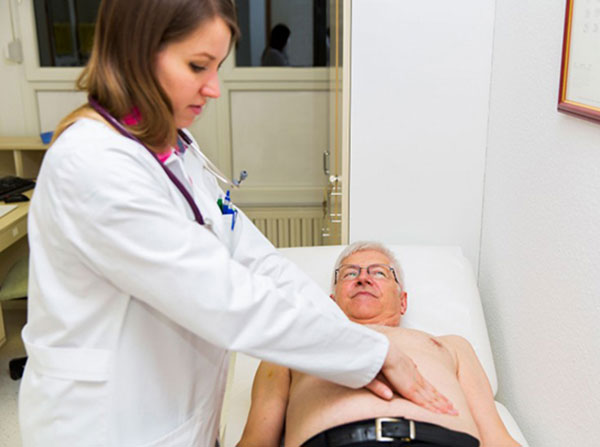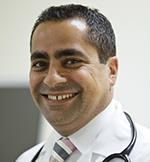
Liver cancer rates increased by 33 percent among white men between 2005 and 2012.
In the past four decades, liver cancer rates have more than doubled among non-Asians living in Los Angeles County, according to a recently released report card administered by USC.
The increase is also reflected among the county’s Asian-Americans.
For some perspective, in the seven years between 2005 and 2012, liver cancer rates increased by 33 percent among white men and by 21 percent among Latino men. The increase was more modest with women in these groups — partially because liver cancer is more common in men.
While Vietnamese are the most likely ethnic group to be diagnosed with the disease, between 2005 and 2012, liver cancer rates actually dropped. The decrease was 1.3 percent among Vietnamese men and 8.7 percent for Vietnamese women.
The data comes from Cancer in Los Angeles County: Trends by Race/Ethnicity 1976-2012. Released on Aug. 15, the book is based on all cancers diagnosed among Los Angeles County residents over the past 37 years — more than 1.3 million cases.
Each year about 16,000 men and 8,000 women die from liver cancer in the United States, according to the Centers for Disease Control and Prevention.

Anthony El-Khoueiry
Why do men tend to have higher liver cancer rates than women?
There is no clear answer. Scientists are looking at the role of hormones. One hypothesis is that estrogen has a protective effect on women, especially in the premenopausal years, but that alone cannot explain everything. Some studies in laboratory animals also suggest that androgen male hormones may contribute to the risk of liver cancer.
Long-term alcohol abuse increases the risk of liver cancer. At what consumption level does alcohol become a serious risk factor?
Hepatologists usually say an average of three alcoholic drinks a day or higher puts people at high risk for cirrhosis, where healthy liver tissue is replaced with scar tissue. Cirrhosis could lead to liver cancer.
Should people who have liver cancer abstain from alcoholic beverages?
This is a poorly studied area. Continuing alcohol consumption may not impact the behavior of the cancer itself; however, it could negatively impact underlying liver function, which could in turn prevent oncologists from being able to treat tumors properly. It would be best to discontinue alcohol consumption if one has liver cancer in order to minimize the ongoing insult to the liver and prevent added pressure on the already compromised liver function.
What is causing the drastic increase of liver cancer cases?
Scientists believe hepatitis C and obesity, along with diabetes, are the main causes for the increasing rates of liver cancer. Obesity and metabolic syndrome — characterized by abdominal obesity, diabetes, high blood pressure or high cholesterol — are established risk factors of liver cancer. Metabolic syndrome could lead to non-alcoholic steatohepatitis (inflammation in the liver along with fat deposition), which can lead to cirrhosis and liver cancer.
These are relatively recent observations, so therapeutic interventions to lower liver cancer risk have not been fully established. One could, of course, follow common sense: lower weight, have a healthy diet, exercise regularly to prevent metabolic syndrome.
What preventive measures can be taken?
The risk factors for liver cancer are alcohol, hepatitis B and C, autoimmune hepatitis or any continuous inflammation of the liver that leads to cirrhosis.
- Avoid excessive intake of alcohol.
- Get the hepatitis B vaccination.
- Avoid dangerous behavior that increases the risk of hepatitis C: sharing needles or syringes, multiple sex partners, unsafe sex with infected individuals.
- Get FDA-approved treatments for hepatitis C.
- If you know that you have any form of chronic liver disease, it is important to see a liver specialist
How important is early diagnosis?
If the disease is caught early, then you can cure it. Surveillance for people who have chronic liver disease is helpful to catch small tumors early. The chances of cure are much higher when the cancer is early (no more than 3 tumors and less than 3 centimeters in maximum size). The two main treatments that provide a cure include liver transplant and surgery to remove the tumor.
Have there been any breakthroughs in treatment?
The challenge in the treatment of liver cancer is that doctors have to balance the cancer and the underlying liver disease and cirrhosis. Patients do better with liver cancer when they are treated by a multidisciplinary team of doctors that includes different specialties. At USC, any patient with liver cancer is reviewed at a multidisciplinary tumor board to make a joint and comprehensive plan that maximizes the patient’s chances.
Historically, we have had limited treatment options for patients with advanced liver cancer who are not candidates for surgery or liver transplant. Things are changing rapidly in this area thanks to new research and clinical trials. One of the exciting areas that is showing promise is using drugs that stimulate the patient’s own immune system to recognize and fight the cancer. USC has played a leading role in the early studies to evaluate this approach, which is now showing good promise and is being studied in large, international clinical trials.
—————————————————————–

Wendy Setiawan
Why is liver cancer on the rise among white people in L.A. County?
We know that chronic hepatitis C is a major risk factor for liver cancer in whites. We are seeing the rise because of the elevated prevalence of hepatitis C infection among white baby boomers who used illicit drugs in the ’60s and ’70s. The increasing number of people who are overweight/obese and/or diabetics have also contributed to this trend.
Why is liver cancer becoming more prevalent among Latinos?
Liver cancer is becoming more common in Latinos because obesity and metabolic syndrome (diabetes) — important risk factors for liver cancer — have become a big problem in this population. Public health efforts to prevent and control diabetes and obesity in this population may reduce the liver cancer burden. Lifestyle changes are advisable.
Why are immigrants from East Asia and Southeast Asia at higher risk of liver cancer?
In most Asian countries and for immigrants from these countries, liver cancer is mainly due to chronic hepatitis B infection. Vietnamese, for example, have the highest liver cancer rates in L.A. County. Studies have shown that the prevalence of hepatitis B virus carriers is quite high among Vietnamese.
Fortunately, hepatitis B infection can be prevented; the hepatitis B vaccine is safe and highly effective. With the implementation of this vaccination program in newborns, the rate of liver cancer has been declining in high-risk Asian countries. We expect the rate of hepatitis B-related liver cancer will continue to decline.
How is coffee a protective agent against liver cancer? How much coffee should someone drink for this protective effect?
There are thousands of compounds in coffee. The most studied compounds in relation to liver function and disease are caffeine, diterpenes and chlorogenic acids, but the exact constituents that protect against liver cancer are still unknown. A recent World Health Organization report showed that coffee drinkers’ risk of liver cancer decreases 15 percent for each cup they drink per day.
In my study, we compared coffee drinkers to non-coffee drinkers. People who reported drinking two to three cups of coffee per day had a 38 percent drop in liver cancer risk. For those who drank four or more cups daily, their risk of developing liver cancer dropped by 41 percent. We mainly observed the beneficial association with caffeinated coffee, not with decaf tea, tea [green/black] or soda.
by Zen Vuong